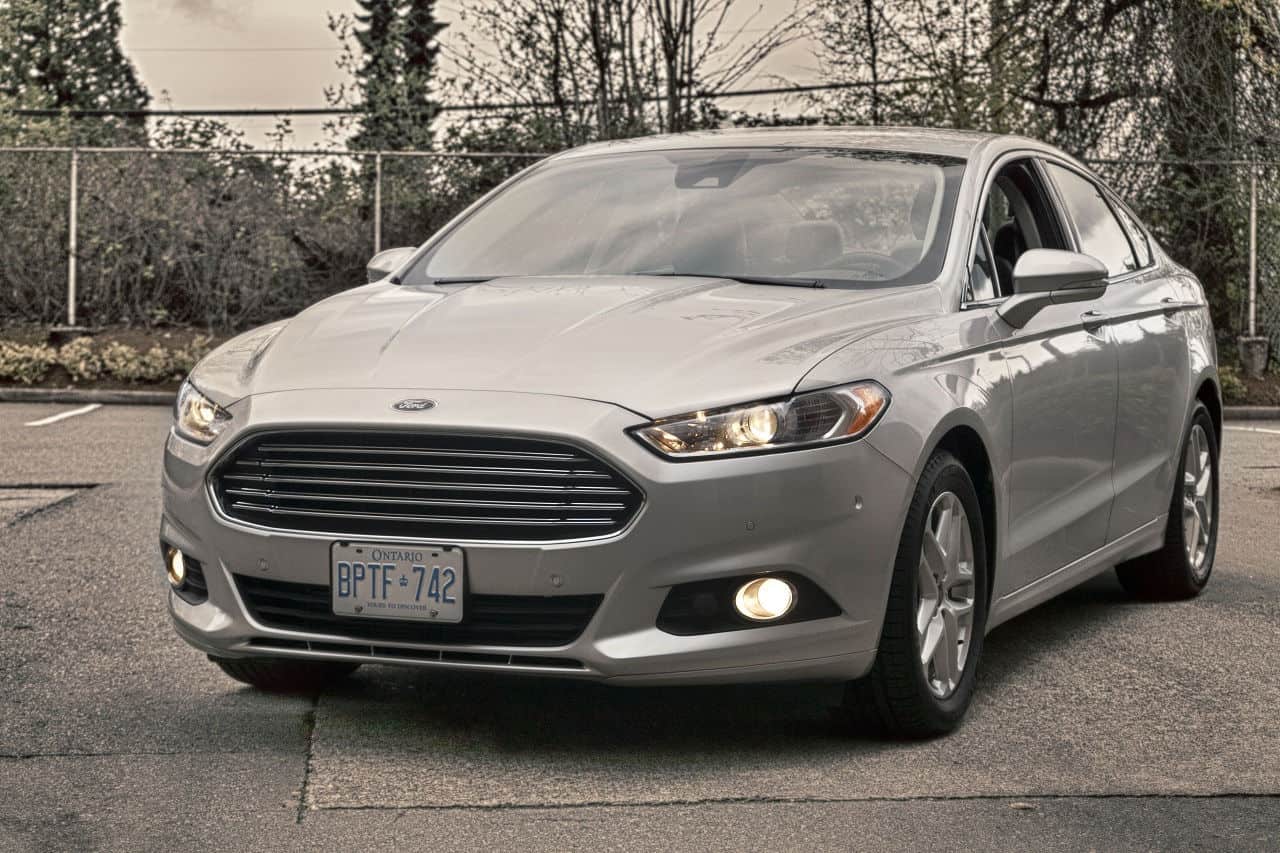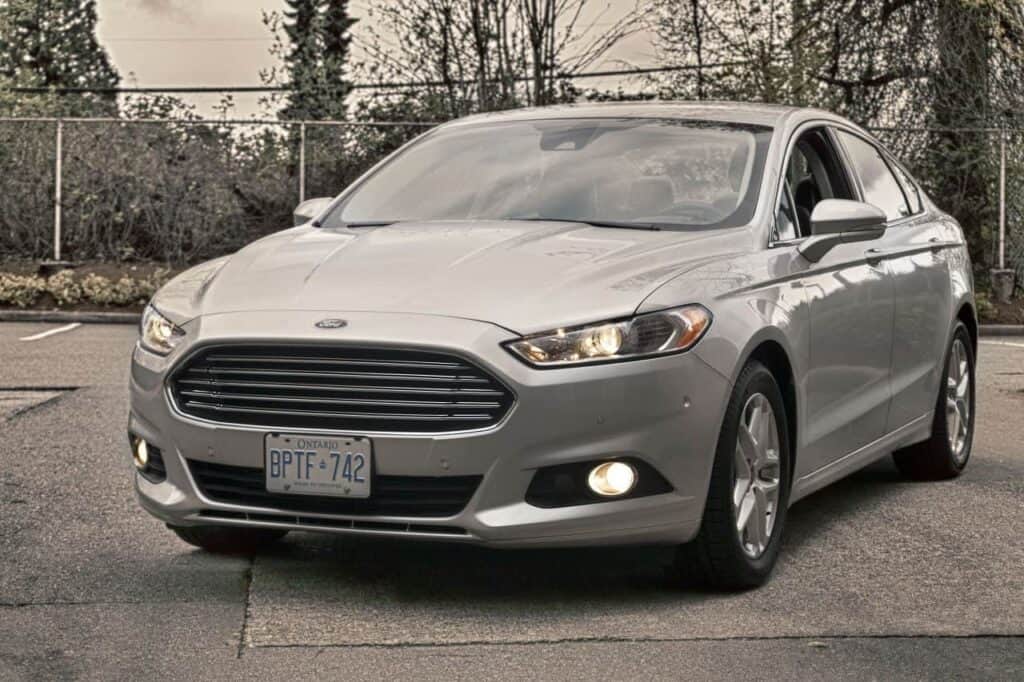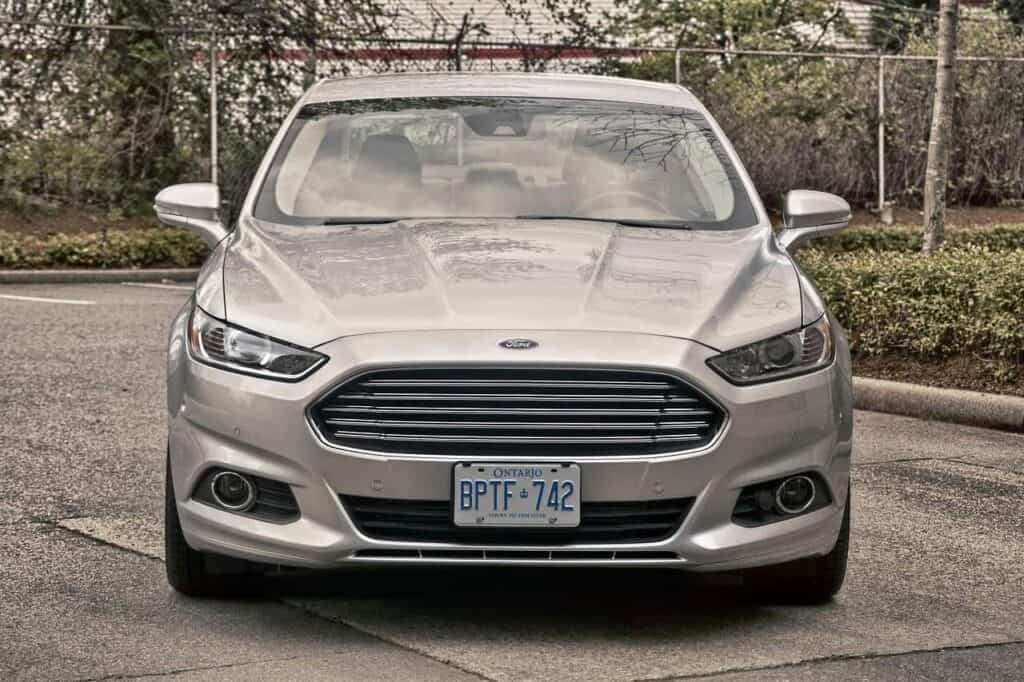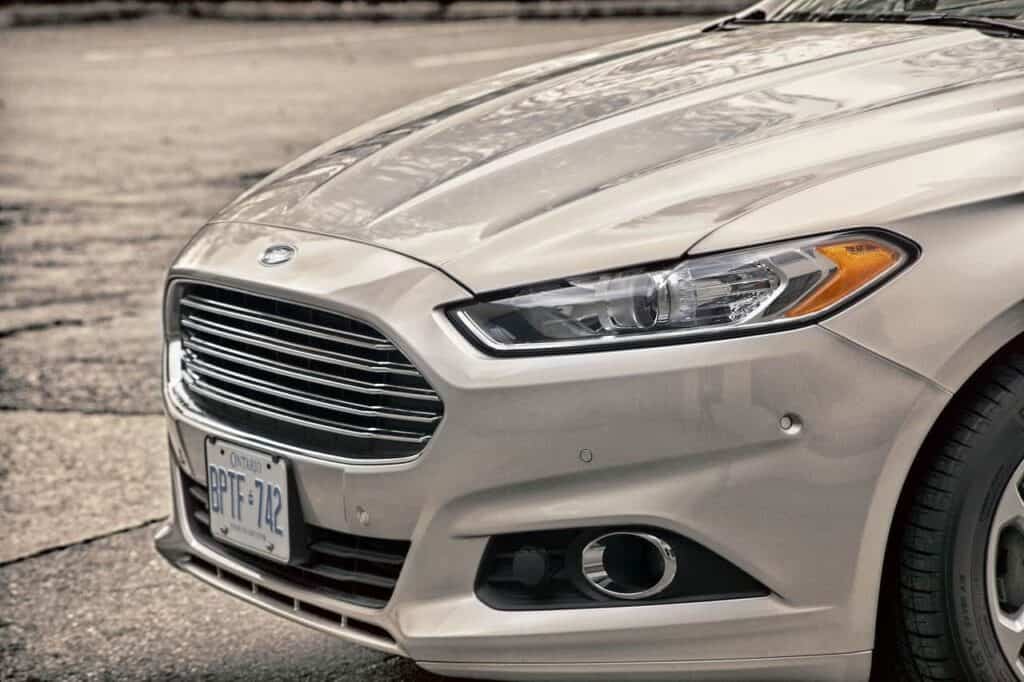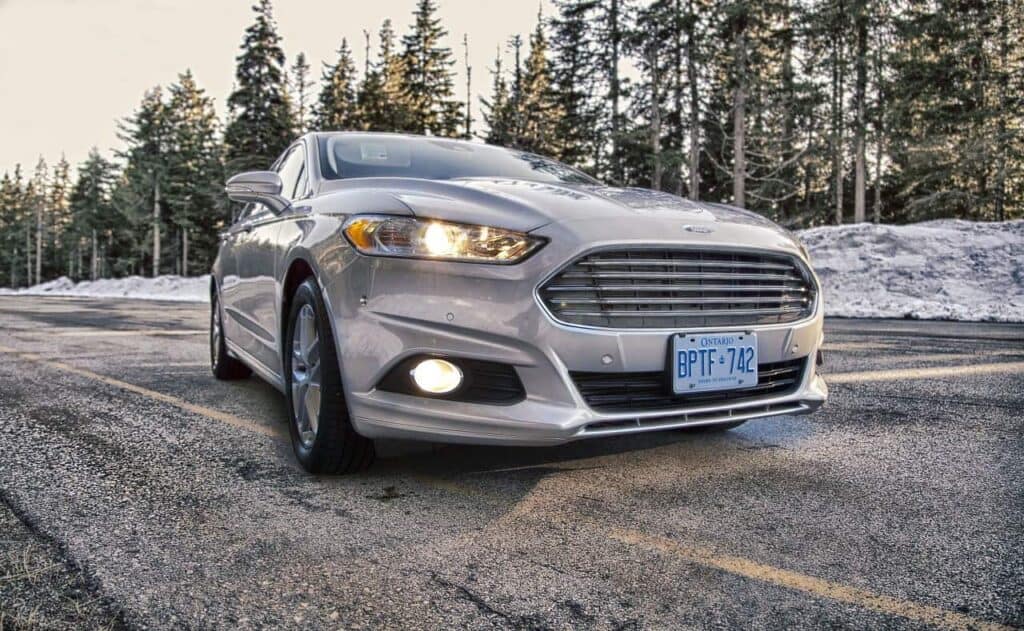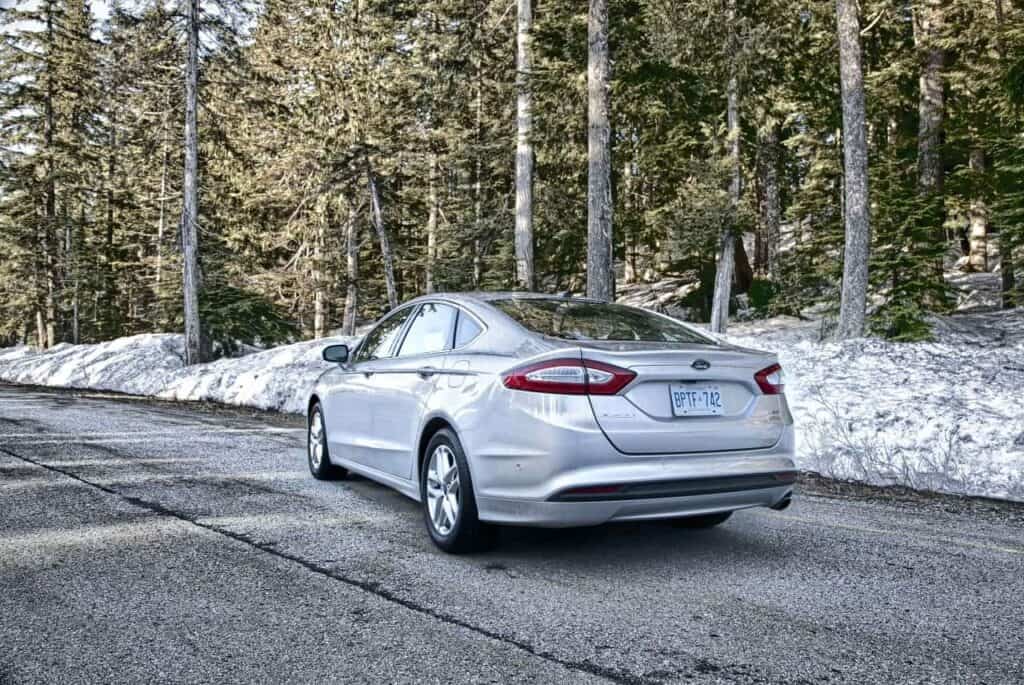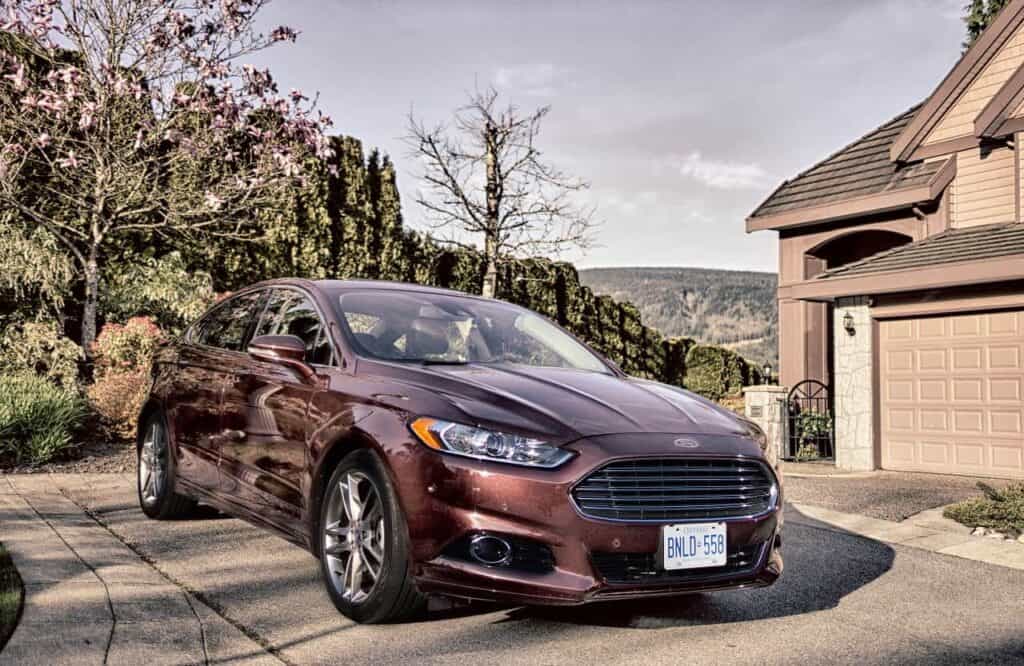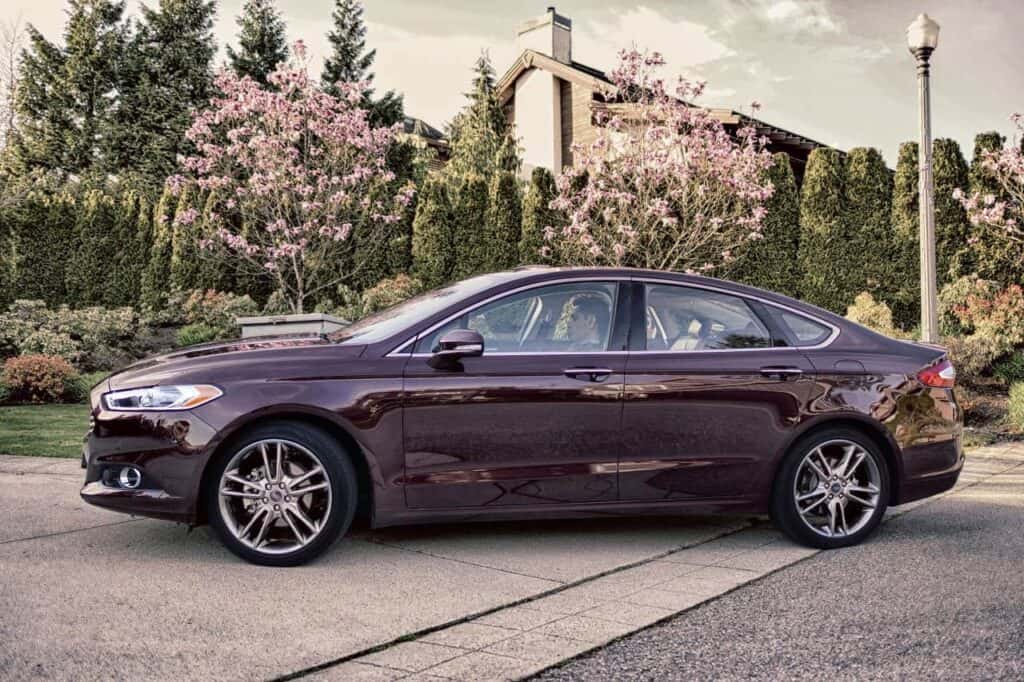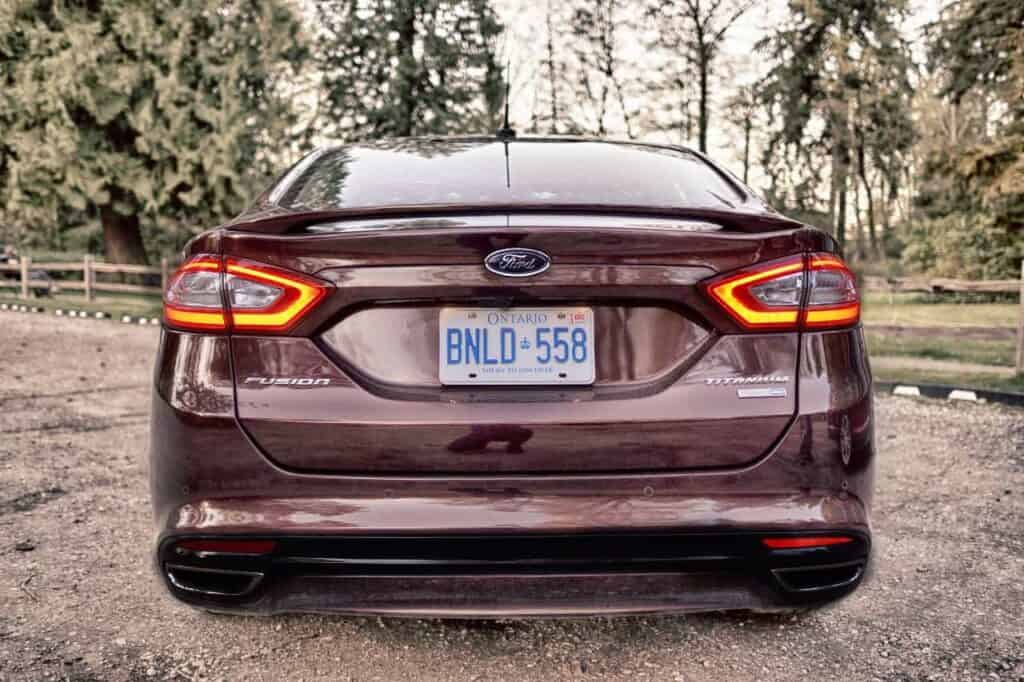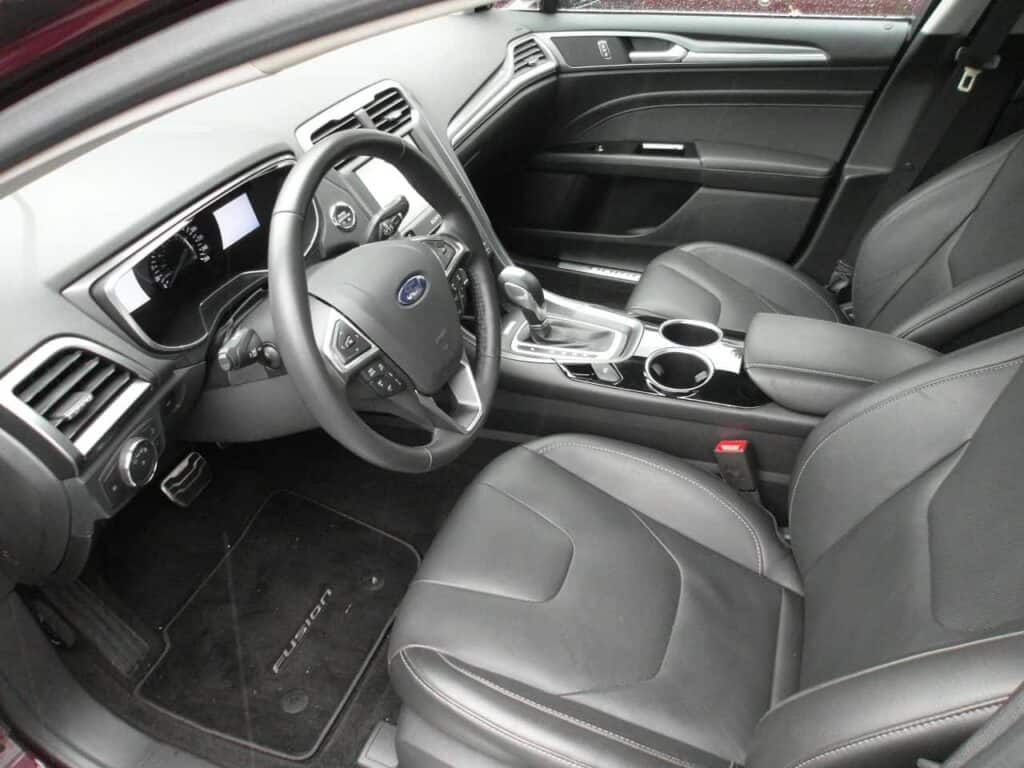I’ve been looking forward to reviewing the 2013 Ford Fusion for quite some time. I’d describe the Fusion as the car James Bond would drive, were he a real life government employee (not some crazy spy with an unlimited budget for cars, girls, and gadgets), with an average salary and a wife and 2.5 kids.
The new for 2013 Ford Fusion is the second generation of this mid-sized car, a car that’s meant to give the imports a run for their money; which it does in my opinion. The 2013 Fusion comes in many trims, from the base “S” model with a 2.5 liter 4-cylinder engine, to 1.6 liter and 2.0 liter EcoBoost engines, and topping it off with the “Energi Titanium”, which comes with a 2.0 liter engine and a plug-in hybrid system. The 2013 Fusion is also offered with a normal non-plugin hybrid system, Ford has a model of the Fusion for every type of buyer.
This review was a bit different for me, because not only did I get to spend a week with a silver Fusion SE 1.6, but also another week with Fusion Titanium 2.0 AWD. The SE 1.6 is one step above the base “S” model with a starting price of $24,499 in Canada (the S starts at $22,499); our test car had a price tag of $33,199 (including $1,550 delivery/destination) with optional equipment. The Fusion Titanium AWD had a price of $41,849; this is the top of the line non-hybrid model with all the bells and whistles.
Design/Styling
I’ll get to the looks of this car first because it’s probably the best looking mid-sized sedan currently available; it looks just as good as some of the luxury sedans that cost two to three times more. The mid-size class if full of some very good cars but driving shouldn’t only be about cars that take you from point A to B, you should be able to arrive in style, and the Fusion has plenty of style.
The design of the 2013 Ford Fusion is very European looking and it looks similar to the Aston Martin Rapide, which is a great looking car (I believe the same designer designed both cars). A few people also thought the Fusion, especially the silver one, looked like a Maserati Gran Turismo from the front; both great cars to be compared to. I personally love the front end design, it’s aggressive but subtle; the hood has lots of curves, like a European sports car. The side profile is also very elegant looking; I’m not too sure about the rear though, it’s nice but could use the aggressiveness of the front.
Design-wise, there isn’t much of a difference between the SE and Titanium. The wheels are different; I really like the look of the optional H-Spoke 19” aluminum wheels on the Titanium. The Titanium also gets a thin rear spoiler and dual exhaust tips that are integrated into the rear bumper.
Performance
The two cars we test drove were pretty different in terms of performance. The Fusion SE is a front wheel drive with a turbocharged 1.6 liter EcoBoost engine with direct injection. This little engine produces 178 horsepower at 5,700 rpm with premium fuel and 173 HP with regular, and 184 pound-feet of torque at 2,500 rpm.
The Fusion Titanium is equipped with the AWD system and powered by Ford’s sweet 2.0 liter EcoBoost engine with direct injection. This engine produces 240 HP (premium gas) and 231 (regular gas) and 270 pound-feet of torque at 3,000 rpm. Both of the cars come with 6-speed automatic transmissions, the Titanium has paddle shifter on the steering wheel, while the SE has a button on the gear lever for shifting up and down.
Under normal driving, I quite liked the 1.6 liter engine in the Fusion SE, it was peppy enough to be fun and felt great in the city. At highway speeds I did need to put the pedal down hard for passing, but once the car was up to speed, it felt comfortable. The 1.6 liter engine is surprisingly quiet under normal driving conditions; it does get a little loud under heavy load. This engine is also great on gas and makes perfect sense for the target market. According to Ford, the Fusion SE 1.6 should consume 8.5 liters/100 km in the city (27.67 US mpg) and 5.3 L/100 km on the highway (44.38 mpg). I was able to manage 9.0 L/100 km (26.14 mpg) in the city and 6.0 L/100 km (39.2 mpg) on the highway; this is the closest I’ve come to a manufacturer’s claimed fuel economy numbers.
The Fusion Titanium AWD is the car more suited for people that love performance. The engine has more than enough power and the engine is very quiet. I personally don’t like AWD cars, they just feel slower to me, but Fusion AWD wasn’t that bad. This car is the thirstier of the two, with a claimed 9.5 L/100 km in the city (24.76 mpg) and 6.3 L/100 km on the highway (37.34 mpg). I was way off on the mileage on this car, with 12.0 L/100 km (19.6 mpg) in the city and 9.8 L/100 km (24 mpg) on the highway, according to the on board computer.
Interior
The interior on the 2013 Ford Fusion is pretty luxurious and very quiet; like all the other new Ford cars we’ve reviewed, the interior has a minimalist design with only a few traditional buttons. Most of the functions can be controlled via the steering wheel, the touch screen, or the touchpad below the screen on the center stack.
The two trims of Fusion have different seats; the SE’s seats have a thin profile, they remind of VW seats. The Titanium comes with bucket seats with more padding on the side bolsters. Both seats are very comfortable, but I prefer the look of the seats in the SE and normally I prefer bucket seats.
Technology
Like all new Ford vehicles, the Fusion can be loaded up with lots of bells and whistles. Our vehicles came with the My Ford Touch system, which I’ve explained in a separate post. The SE came with a rear camera, front and rear park assist, navigation, lane keeping system, and blind spot detection system. The Fusion Titanium came with the above equipment, with the addition of the adaptive cruise control system. Both vehicles also came with auto up and down power windows for all four doors; this is a feature you can’t live without once you’ve used it.
The park assist system comes in really handy, I keep my seat at the lowest setting and I find it hard to know where the front of the car is when I’m parking, the front sensors beeps louder and louder as you get closer to an object. The rear sensors are great, Ford’s system detects cars or even people that are coming from the side, which you can’t see looking back or on the monitor, but with this system, you’re alerted when a car is coming from the side as you’re pulling out of a parking spot.
Overall, I was pretty impressed with both the Ford Fusion SE and Titanium. These cars are beautifully designed, have a comfortable and quite ride, can be loaded up with all kinds of cool gadgets, and they get pretty good gas mileage.
If I was in the market for a mid-sized sedan, the Fusion would be at the top of my list. I’d personally go with the 1.6 liter SE model, hard to believe I’m opting for the less powerful model. I chose this model because most of my driving is in the city and 178 HP is plenty of power, and with gas prices hovering around the $1.45/liter range in Vancouver, the 1.6 liter engine’s mileage is very enticing. For more info on the Fusion, check out Ford’s website.
